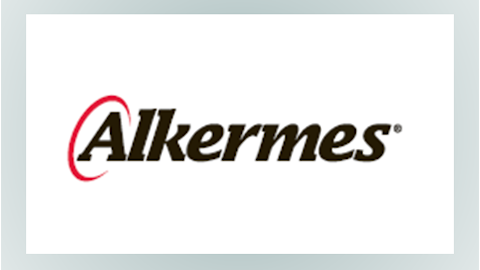Delcath Systems, Inc. (NASDAQ:DCTH) Q4 2023 Earnings Call Transcript March 26, 2024
Delcath Systems, Inc. isn’t one of the 30 most popular stocks among hedge funds at the end of the third quarter (see the details here).
Operator: Good day, and welcome to the Delcath Systems Reports Fourth Quarter and Fiscal Year 2023 Financial Results Conference Call. All participants are in a listen-only mode. [Operator Instructions]. After today’s presentation, there will be opportunity to ask questions. [Operator Instruction]. Please note this event is being recorded. I would now like to turn the conference over to David Hoffman, Delcath General Counsel. Please go ahead.
David Hoffman: Thank you. And once again, welcome to Delcath Systems 2023 fourth quarter results and business update call. With me on the call are Gerard Michel, Chief Executive Officer; Sandra Pennell, Senior Vice President of Finance; Kevin Muir, General Manager, Interventional Oncology; Vojislav Vukovic, the Chief Medical Officer; and Martha Rook, who recently joined as our Chief Operating Officer. I’d like to begin the call by reading the safe harbor statement. This statement is made pursuant to the safe harbor for forward-looking statements described in the Private Securities Litigation Reform Act of 1995. All statements made on this call, with the exception of historical facts, may be considered forward-looking statements within the meaning of Section 27A of the Securities Act of 1933 and Section 21E of the Securities Exchange Act of 1934.
Although the company believes that expectations and assumptions reflected in these forward-looking statements are reasonable, it makes no assurance that such expectations will prove to have been correct. Actual results may differ materially from those expressed or implied in forward-looking statements due to various risks and uncertainties. For a discussion of such risks and uncertainties, which could cause actual results to differ from those expressed or implied in the forward-looking statements, please see risk factors detailed in the company’s annual report on Form 10-K those contained in subsequently filed quarterly reports on Form 10-Q as well as in other reports that the company files from time-to-time with the Securities and Exchange Commission.
Any forward-looking statements included in this call are made only as of the date of this call. We do not undertake any obligation to update or supplement any forward-looking statements to reflect subsequent knowledge, events or circumstances. Now I would like to turn the call over to Gerard Michel, Gerard. Please proceed.
Gerard Michel: Thank you, everyone, for joining today. On today’s call, I will focus primarily on our commercial progress in the U.S. since our last update call in November. We continue to be encouraged by both the medical oncologist intervention radiology communities interest in engaging with our medical and commercial teams. Their motivation and stated commitment to incorporate HEPZATO KIT into their practices treating patients with metastatic uveal melanoma. The company is currently working with over 20 leading cancer centers across the U.S., which have indicated interest in HEPZATO KIT. I will shortly share more details regarding our team’s achievements over the last 4 months, as a result of which we are increasing our site activation guidance from 15 active sites by the end of 2024 to 20 active sites by the end of the year.
The approximate pacing of site activation will be 10 active sites by the end of the second quarter, 15 by the end of the third quarter and 20 treating sites by year-end. Importantly, we believe that our current financial resources, subsequent to our most recent $7 million financing are adequate to achieve these goals. It is important to note that this financing was supported entirely by Delcath senior executives, board members and existing institutional investors. In January 2024, we announced the first commercial patient treated at Moffitt Cancer Center. By the end of the first quarter, we expect to have 4 active sites. These include Moffitt Cancer Center, Stanford University Cancer Center and Thomas Jefferson University, which are fully trained and are currently treating commercial patients.
In addition to those 3, the University of Wisconsin is scheduled to treat the first commercial patient by the end of this week. In the first quarter, given the mark start for most of those sites and the temporary use of product sampling for some of the initial proctor cases first quarter revenue will predominantly be generated by treatments at Moffitt. With the balance of the 3 sites activated in the first quarter starting to consistently generate revenue in the second quarter. While some sites will be more active than others, on average, we expect treatments per site to steadily increase from an average of approximately 1 per month early in the second quarter, ramping to a run rate of approximately 1.5 treatments per month by midyear and then reaching a run rate of 2 treatments per month late in the fourth quarter.
These past 4 months have been a critical period for the company as we prepared for and subsequently launched HEPZATO KIT in the U.S. During the prelaunch and early launch period, the commercial and medical affairs teams needed to accomplish 3 critical objectives. These included obtaining a product-specific reimbursement code and pass-through status from CMS. Effectively communicating the potential benefits that HEPZATO can provide to patients suffering from metastatic uveal melanoma to a broader set of medical oncologists and intervention radiologists, and developing an efficient process to educate, train and activate commercial sites. I believe that our progress to date demonstrates that we achieved all 3 of these launch-related goals. Starting with product-specific reimbursement on January 30, CMS established a permanent and product-specific J-code, J9248 for HEPZATO, which will become effective on April 1, 2024.
Supplementing the J-code is transitional pass-through payment status, which was granted on March 31 and what will also be effective on April 1. While we are aware that hospitals have successfully been reimbursed for the treatment using a miscellaneous C-code, the establishment of a permanent J-code for HEPZATO will greatly simplify the reimbursement process and lowered the perceived risk of a hospital not receiving adequate reimbursement. The importance and impact of having the unique J-Code cannot be overstated. In conjunction with medical oncologists at each of our target sites, we have been working with the sites interventional radiologists to identify and train HEPZATO KIT treatment teams. To date, we have had over 90 perfusionists, anesthesiologists, and intervention radiologists attend 1 or more preceptorships, representing approximately 20 institutions in the U.S. with some institutions sending multiple health care providers for the same specialty.
This volume of training activity is clear evidence of the success of our outreach and the resulting broad physician interest in the U.S. to incorporate HEPZATO as a standard of care for patients suffering from metastatic uveal melanoma. In addition to training the treatment teams at each site, we are also working to continue to obtain HEPZATO KIT hospital formulary and value analysis committee approvals at additional hospitals, and we have found MD champions at each site to help shepherd HEPZATO through these processes. Since the product specific J-code will greatly simplify these reviews after it becomes effective on 1 we expect to see a significant increase in the pace of facilities conducting their first commercial treatment and fully completing the required REMS training.

In fact, in just the first 2 weeks of April, 3 additional sites have scheduled treatments. These include Ohio State University Wexner Medical Center, University of Tennessee Memphis and UCLA Health. A further 2 sites Mayo Clinic Jacksonville and Duke University have completed the necessary steps to conduct their first commercial treatment under the guidance of a proctor once hospital formulary and value analysis committee approval is obtained. In total, there are 9 sites currently accepting patient referrals, 4 of which have or will conduct a commercial case before the end of the first quarter, 3 of which have a patient scheduled in the first 2 weeks of April, and another 2 sites which are pending hospital formulary and Value Committee analysis.
Before these — beyond these 9 sites, approximately another 10 to 11 sites currently have preceptorships scheduled or are partway through the preceptorship training. As a reminder, to activate a site, we need to train a center, which includes didactic training, 3 health care professionals traveling to attend a preceptorship and subsequently 3 experienced health care professionals traveling to the new site to proctor the first case. And of course, reviews by hospitals formulary and value analysis committees. The entire process from initially scheduling their preceptorship to activation can take approximately 3 months. Given the significant level of commitment required from these health care providers to become fully trained and certified under the REMS program, we believe all the health care providers and the approximately 20 cancer centers involved to date all intend to incorporate HEPZATO KIT as a core part of their treatment regime for metastatic uveal melanoma patients.
These achievements would not impossible without a world-class commercial team with support from our medical affairs and operations groups. Kevin Muir, Delcath’s General Manager of Interventional Oncology has been focused on building the right commercial organization to launch of HEPZATO for well over a year. Kevin has made a point of bringing on team members that have experience in launching complex therapies that require multiple stakeholders in the hospital setting. As a reminder, we have divided the U.S. into 4 regions, each of which will be initially served by a commercial team of 3 comprised of a liver-directed therapy manager, who will manage the hospital approval process and ensure that the HEPZATO KIT procedure team is trained and supported, and oncology manager, who is building referral networks to the oncologists within the treating centers and the clinical specialists, who will support the treatment teams in preparation for and during the treatment with the goal of ensuring patient safety and improving patient outcomes.
At the moment, we have about 70% of this team in place and expect to finish recruiting by July. Over time, we may increase the field force by a modest amount, for example, increasing the number of oncology managers to 2 per region. In addition to the significant commercial activity, we continue to support both internal and external efforts to add to the growing body of evidence that PH3 procedure, whether utilizing melphalan delivered by Delcath’s CHEMOSAT or the HEPZATO KIT is an important treatment option for patients with liver dominant uveal melanoma. As a reminder, there is an ongoing investigator-initiated randomized Phase II trial in Europe, the CHOPIN trial evaluating the effect of adding immunotherapy to CHEMOSAT’s liver directed therapy.
The trial has enrolled approximately 60 of the plant, 76 patients and the investigators expect the trial to be fully enrolled by the end of this year. The primary objective of the trial is to compare the progression-free survival at 1 year of patients treated with the combination of immunotherapy with ipilimumab and nivolumab with CHEMOSAT to patients treated with CHEMOSAT alone. As CHOPIN is an investigator-initiated trial, we do not control the timing of data release. However, our understanding is that the study results, including the primary endpoint will be presented at a major oncology conference in the second quarter of 2025. In the fourth quarter, we announced the publication of results from 2 independent investigator-led studies, the first of which was a retrospective comparative study of CHEMOSAT and selective internal radiation or SIRT help us in the Journal of cancers and the second, which focused on the impact of CHEMOSAT on the quality of life of patients with metastatic uveal melanoma and was published in the journal Melanoma Research.
The comparative study of CHEMOSAT and SIRT was conducted by investigators from the University Hospital to begin Germany and cared there are multiple cycles of SIRT versus 2 treatments of PHP with CHEMOSAT, in this paper, CHEMOSAT demonstrated clear advantages over SIRT, including a clinically meaningful and statistically significant improvement in OS. The second publication entitled quality of life after Melphalan hepatic perfusion for uveal melanoma was conducted by independent investigators from University Hospital South Hampton, U.K. and reported the impact of PHP with CHEMOSAT on the quality of life of patients with metastatic uveal melanoma. The office concluded that utilizing Delcath’s CHEMOSAT to administer a high-dose melanoma delivery is well tolerated by patients and does not negatively affect their quality of life.
While HEPZATO is used to treat metastatic uveal melanoma represents a validated and sizable market opportunity for us to capitalize on, we believe that HEPZATO has the potential to treat other cancers in the liver, such as metastatic colorectal cancer, metastatic neuroendocrine tumors, metastatic breast cancer and intrahepatic cholangiocarcinoma. And we plan to begin a study on HEPZATO KIT to treat 1 of these physicians within a year, while still focused on our revenue growth and increase in cash flows from operations. We believe that those in similar disease states are areas of unmet medical need that represent significant future growth opportunities for our platform. In summary, the company has passed a major inflection point in terms of relative risk and potential return, given FDA’s approval of the HEPZATO KIT last year, the issuance by CMS of a product-specific J-code the demonstrated interest from over 20 major institutions and our proven ability to train and activate sites.
While the treatment of metastatic uveal melanoma patients will support significant growth for the foreseeable future, we are planning to pursue additional indications given the tremendous unmet need for patients suffering from cancers of liver. Clearly, the future of Delcath has never been brighter. I will now hand the call over to Sandra to share some details on our financial position. Sandra?
Sandra Pennell: Thank you, Gerard. We ended Q4 with $32.5 million in cash and investments and cash used in operations was approximately $8.1 million in the fourth quarter. The increase in cash from prior year-end is due to the 2023 private placement financing, which provided approximately $60 million in cash to fund activities through approval and the launch of HEPZATO KIT in the U.S. Recently, on March 19 this year, the company closed a $7 million private placement to ensure sufficient cash for operations until the company achieved $10 million in quarterly revenue, which will trigger a potential warrant exercise, which could result in $25 million in proceeds. We are confident we will achieve $10 million in quarterly revenue no later than the fourth quarter of this year.
Revenue from our sales of CHEMOSAT was $0.5 million for the 3 months ended December 31, 2023, compared to $0.6 million for the same period in 2022. For the 3 months ended December 31, 2023, research and development expenses were $4.7 million compared to $4.4 million for the 3 months ended the previous year. The increase is primarily due to higher personnel expenses. For the 3 months ended December 31, 2023, compared to the same period in 2022, selling, general and administrative expenses have increased to $7 million from $3.8 million. The increase is due to activities to prepare for commercial launch, including marketing-related expenses and additional personnel in the commercial team. That concludes our prepared remarks. I’d ask the operator to open the phone line for Q&A.
Can you please check for questions.
See also 15 Hungriest States in the US and Top 20 Mid-Cap Tech Companies in the US.
Q&A Session
Follow Delcath Systems Inc. (NASDAQ:DCTH)
Follow Delcath Systems Inc. (NASDAQ:DCTH)
Operator: [Operator Instructions] Our first question comes from Bill Maughan with Canaccord Genuity. Please go ahead.
Bill Maughan: Congrats on the hot start for commercialization. Just in terms of what you’re seeing so far in the patients that are being enrolled and treated, can you comment on what other therapies they have been through and what therapies that doctors are choosing not to put them on and to put them on HEPZATO instead. And when you’re speaking with these doctors, is there interest on their part in combination with systemic agents? Or are they just simply kind of taking instruction as you’re giving it and just sort of following that playbook.
Gerard Michel: Yes, I’m going to hand that question off in a second to Kevin, and maybe Voya can comment on the combination. But I’m going to start by saying that due to HIPAA rules, we don’t have a direct pipeline to what patients, what are the treatments they’ve gotten. Now inevitably, since we do said in the procedures, we do — and we do talk to docs, we have some sense of the mix. So I think it’s fairly varied. But Kevin, why don’t you chime in, in terms of early anecdotal evidence as to whether these patients are pretreated, not pretreated, I suspect it’s a mix, just like we had in the trial.
Kevin Muir: Yes. Thank you, Gerard. And you’re exactly right. The anecdotally from what we’ve learned in the field to this point is that it’s just as we would suspect patients are treated with — some of them have had prior systemic treatment and some of them have had prior liver directed treatment, and we’ve even had some patients who have had no treatment. So it’s a little early to make a bold statement about where we fit into the treatment paradigm. And I’m sure that, that will shift over the year.
Gerard Michel: Do you want to maybe talk about some of what your medical affairs team have heard about interest in combination therapy.
Vojislav Vukovic: Sure. Yes. Similar to what Kevin mentioned, we see several patterns emerging of the implementation of HEPZATO and CHEMOSAT in Europe into the treatment paradigm, 1 being induction treatment to get the disease under control and enable other treatments, for example, maintenance, but also a very big interest for combinations, as Gerard mentioned in the remarks, the ongoing CHOPIN trial is in IPI/NIVO submit immunotherapy combination. There are other regimens of IPI/NIVO that are currently under consideration. And there’s also strong interest in combinations of [Indiscernible] as well. So we’ll be exploring obviously together with investigators, all these options to simply find the best path to integrate HEPZATO into treatment paradigm.
Bill Maughan: And then just as a quick financial follow-up. Looking at your cash position, cash runway and this final tranche of financing that would come into play if you hit $10 million in the quarter. What’s sort of your base case outlook for the company’s finances going forward? It looks like you can get to cash flow positivity, and then at that point, you can push into potentially other liver cancers. Do you expect cash flows from your initial HEPZATO indication to support all that extra potential development? Or I just kind of want to get a sense of how you’re feeling in terms of cash needs on that.
Gerard Michel: Yes. Our base case is to be very sensitive to dilution to existing investors. And therefore, fund new development out of cash flows from the company. So our base case is we should be able to be cash flow positive, assuming the stock works when we had $10 million and the warrant exercise, et cetera, without additional financing, and that since we’re not planning, I’m starting 4 huge trials at once to be able to fund at least 1 trial of that cash flow and hopefully more over time.
Operator: Our next question comes from Marie Thibault with BTIG. Please go ahead.
Marie Thibault: Congrats Gerard and Sandra on this positive update today. I wanted to ask a little bit more about some of the commercial traction you’re seeing so far. I know at Moffitt for now and then some commercial proctored cases coming. Just to clarify, are all the first proctored cases are those commercial, are they all going to be bringing in revenue? And then any details you can offer on how many patients have been treating commercially so far here in the first quarter, are they coming back for repeats? What’s sort of the trends, if — I know it’s early to call a trend, but if there’s any more kind of metrics you can give us around the commercial traction.
Gerard Michel: Yes, I don’t think we’re going to be doing too many sample cases in the proctor cases in the second quarter. In the first quarter, we found it useful for a variety of reasons to do so. I think I would say 80% of the business we’re going to get in the first quarter is going to be from Moffitt and they’re running at a run rate of, let’s say, roughly 2% a quarter. So hopefully, that will help you there in terms of what we expect in — 2 per month, excuse me, I just had someone on my video go dry, what do you say, per month. And — but all the centers that are up and running now will definitely contribute to revenue in the second quarter. In terms of our patients coming back, yes, patients are coming back. I can’t, at this point, tell you what the average number of treatments will be per patient in the commercial setting, it was 4.1 in the clinical trial.
But we see no indication that they’re doing 1 in stopping or 2 in stopping at this point. It looks like they’re behaving at least to the — with the data we have in hand at the moment, they’re behaving at least like they did in the clinical trial.
Marie Thibault: And then congrats to Martha — to Dr. Rook on her new role. Can you tell us anything about the priorities she’ll be focused on? Any changes, any tweaks happening on the operations side that she’s focused on?




